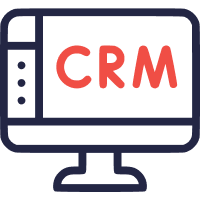 Keith Jones, A Frontier Go-To-Market Leader
Keith Jones, A Frontier Go-To-Market Leader
As part of Aviso's Revenue Navigators Series, we spoke with Keith Jones, who spearheaded the go-to-market team at Mural. Keith has spent the majority of his career in growth-stage startups as an operator and technologist with his most recent adventure taking him to Gartner to focus on revenue technology strategy.
This post is the first of two segments breaking down Keith’s interview with Aviso. As a revenue technology strategist with expertise in revenue operations, sales, solutions engineering, and systems, Keith spoke about how revenue tools can help leaders scale their organization’s growth, drive revenue intelligence, and optimize sales enablement and strategy to achieve desired revenue outcomes.
Aviso: How do you see the role of data and workflows in building a scalable revenue operations foundation?
Keith Jones: Data needs action plans or workflows on how it will be used to add value. It's not enough to just gather data; you need to have an actionable and clearly laid out plan of what you do with that data — that’s your workflow. So it’s not enough for me as a technologist to provide something that has a pretty graph or a good report; there has to be a story behind it. We need to create workflows on how to glean more insights and deliver them to the right stakeholders to make an impact.
Building these workflows requires a proper understanding of your customer's journey. Think of the customer journey as a pyramid. You need to look at the different phases that your customer is going to go through all the way from ‘cold to sold to resold’ — the journey a customer takes to move from first learning about a brand to being the advocate for it.
In order to have the right combination of data and workflow, you have to understand what data is relevant at each point in the customer's life cycle and what your internal contributors should be doing on the back of that data.
Aviso: How can revenue leaders drive higher utilization with the revenue tools they buy?
Keith Jones: To improve the utilization or adoption of revenue tools, it's imperative to connect the dots. Different teams need to understand how the tool, dashboard, or data points connect to their KPIs and how they can drive success with it. I like to think about it from the perspective of your leaders and your contributors. They know what metrics they are being measured on. If you can connect the dots between the data you are capturing, or surfacing and how it helps revenue leaders achieve more in any one of those metrics, that ultimately dictates whether they are being successful in producing the desired results. That's where you get the win.
I think of the age-old adage — sales is the easiest job to get but the hardest job to keep. It's never about “what have you done for me, but what have you done for me lately”. And this all ties back to connecting the dots. If the data, workflow, and stage of the customer lifecycle are not well-connected; you stand a pretty high risk of not seeing the utilization or adoption that you would expect to see of any product, dashboard, or insights that you want to generate.
Aviso: What are the most important correlations you look for between sales processes, technologies, and revenue outcomes?
Keith Jones: For me, it comes down to consumption and specificity. I'll get rather tactical on that one. Let's say I've got three different reports that I know a seller is supposed to use on a regular basis. This is called the seller’s command center; the dashboard that they're supposed to use every day. And this is where we expect them to drive a ton of their actions from. If I've done my job right each of those reports is not going to be loaded with tons of different data points. It will have at most 5 to 10 relevant data with insights on what to do next. And I can see how often those reports are being run and who's running them.
So now I start to look at “can I draw any correlation between the behaviors or lack thereof and the usage of the collateral being provided?” This goes further into the documentation of the sales process. If you have documented the sales process, how often are your sellers referring back to that document, or how often they are submitting internal tickets asking about that sales process?
Analyzing such correlations helps prioritize improvement areas for the next quarter and optimize sales enablement strategy to achieve desired revenue outcomes and drive revenue intelligence.
Conclusion
Revenue intelligence plays an important role in unlocking growth for any business. Revenue leaders get comprehensive, clear data that is motivated by facts rather than opinions.
In this interview segment, Keith spoke about the importance of action plans or workflows in adding value to the data and the need to understand a customer’s lifecycle for building a scalable revenue operations foundation. Keith also discussed the correlations between sales processes, revenue tools, and revenue outcomes in optimizing sales enablement.
Aviso AI is an all-in-one revenue operations platform. Aviso guides revenue teams with AI-powered deals, conversation, people, and activity intelligence. By using Aviso, revenue teams can wade through the fog of outdated sales tech like CRM and find their revenue true north.
If you are interested in knowing how Aviso can help you unlock your revenue potential with AI-based revenue intelligence, please sign up here. You can also read other customers' success stories here.

















 BY USECASES
BY USECASES
 BY CRM INTEGRATION
BY CRM INTEGRATION
 COMPARE
COMPARE















